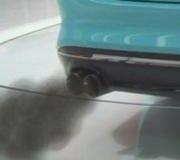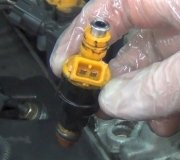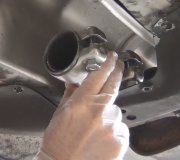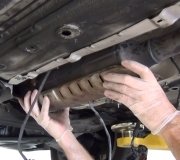Hi and thanks for using 2CarPros.
Black smoke usually indicates a rich fuel mixture (too much gas to the engine). With that in mind, I first suggest testing the fuel pressure to make sure the regulator is working and not allowing too much pressure to build.
Here are the pressure specs:
FUEL PRESSURE:
At Idle .................... 33 - 37 PSI (226 - 265 kPa)
At WOT .................... 38 - 44 PSI (265 - 304 kPa)
Here is a link that shows how that is done:
https://www.2carpros.com/articles/how-to-check-fuel-system-pressure-and-regulator
If the pressure is good and everything is working properly, my next suspect is the coolant temperature sensor. I am assuming that this vehicle is the same as the 4runner in the US. I am basing this information on that vehicle with the 4 cyl 2.4L.
Now, the coolant temperature sensor is used by the ECU to determine air fuel ratios. The computer adds or removes fuel based on coolant temperature. If the sensor is telling the computer the coolant is -40 degrees F but in reality it is 90 degrees F, the fuel mixture will be too rich (too much gas) and cause driveability issues and often times, black smoke.
Take a look through this link
https://www.2carpros.com/articles/symptoms-of-a-bad-coolant-temperature-sensor
With that in mind, here is a link that shows how to retrieve diagnostic trouble codes from your vehicle's computer.
https://www.2carpros.com/articles/toyota-trouble-code-definitions-and-code-gathering-method-1990-1995
If you follow the link, you may or may not end up with information related to this problem. I say that because most times, the computer doesn't realize it is receiving bad information from the sensor so it doesn't identify it as a problem. Regardless, check it to make sure nothing else is indicated.
If you find that is the problem, here are the directions for testing the sensor.
COMPONENT INSPECTION
1. Disconnect the connector from the Water Temperature Sensor.
2. Using an Ohmmeter, measure the resistance between the terminals.
Testing Water Temperature Sensor
See picture 1
3. Refer to the specification chart and compare readings with appropriate temperature parameters.
Water Temperature Sensor (THW)
See picture 2
4. If readings are not as specified, replace the Water Temperature Sensor.
_______________________________________
Here are a couple links that may help you.
https://www.2carpros.com/articles/how-to-use-a-test-light-circuit-tester
https://www.2carpros.com/articles/how-to-use-a-voltmeter
https://www.2carpros.com/articles/how-to-check-wiring
_______________________________________
Next, if the sensor is bad, here is a link that shows in general how one is replaced.
https://www.2carpros.com/articles/coolant-temperature-sensor-cts-replacement
______________________________________
Let me know if this helps or if you have other questions.
Take care,
Joe
Images (Click to make bigger)
Saturday, January 19th, 2019 AT 7:17 PM















